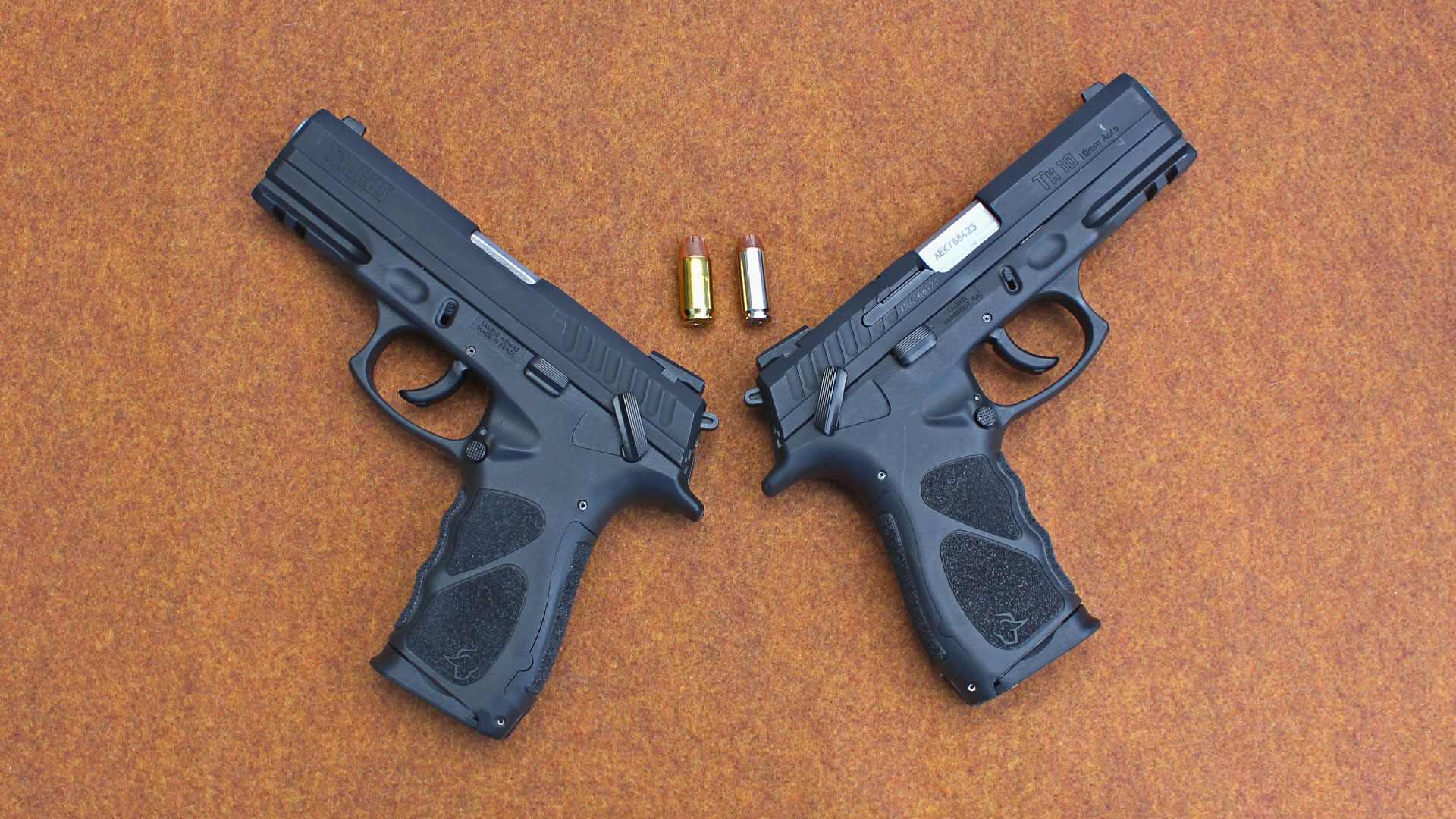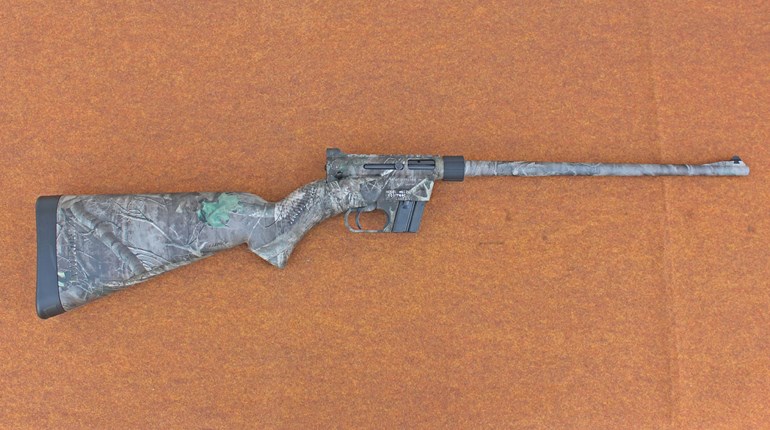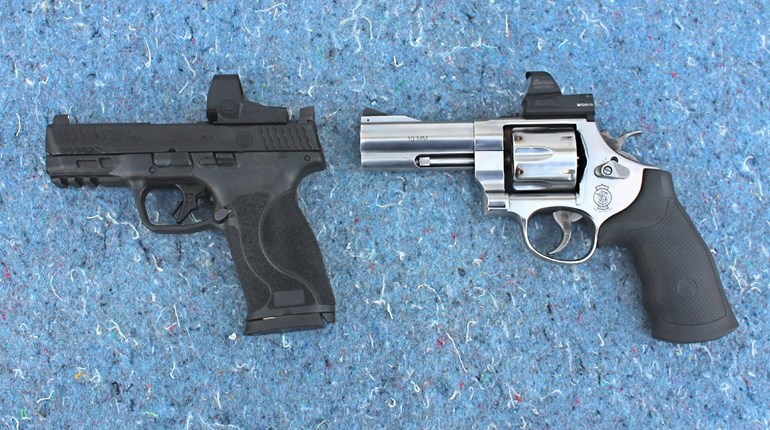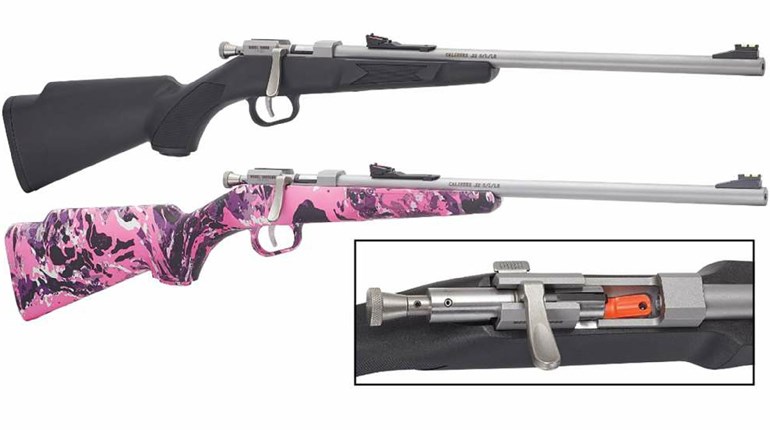
Over the last few years, I've had the opportunity to post a series of pieces to the NRA publications' websites discussing various makes, models and calibers of what I like to call trail-to-town guns. These are some of the revolvers and pistols which are well suited for both defense against dangerous game and concealed carry around town for personal protection. I led off these conversations with the more compact-size big-bore revolvers chambered in calibers including .357 Mag., .41 Rem. Mag. and .44 Mag. My reasons for doing so were two fold. First, big-bore wheel guns have been the go-to option for trail defense for quite some time. Secondly, despite the growing popularity of semi-automatic pistols for trail use, revolvers still offer noteworthy advantages for folks who work or play where dangerous game animals roam.
In recent times we've seen polymer-framed 10mm pistols moving into more holsters for use on the trail, and for good reasons. Their ammunition capacity, reliability and performance potential make them a solid fit for the job. And, due to their popularity, we posted a piece intended to answer questions about where 9mm pistols fit in the great outdoor scheme of things.

But in the course of these previous conversations, I haven't provided as much page space for one of the most popular and storied calibers favored by American shooting sports enthusiasts, namely, the .45 ACP. It's true that the 10mm Auto and 9mm are hogging the pistol media spotlight these days and that the .40 S&W has slipped even further into obscurity because of it. But the .45 ACP is still going strong and deserves closer scrutiny as a trail-to-town caliber option than it may currently be receiving.
Since the 10mm Auto is the soup du jour of the semi-automatic trail gun caliber conversation these days, I've been looking for a good opportunity to conduct a test of that round vs. the .45 ACP. But one of the challenges with side-by-side caliber comparisons like this is pairing up equivalent firearms. Evaluators often have to work with pistols which are similar, but not the same (I've done it myself). Although the results are comparable, the differences in platforms' make, model, frame materials and barrel lengths means we have to squint a little when looking at the results.

But this year I found myself in the unique position of having two pistols on hand chambered in .45 ACP and 10mm which are mechanically identical (with the exception of those internal modifications required for differing calibers). They are the two big-bore members of the Taurus USA TH series of semi-automatics dubbed the TH45 and the TH10. Here is an overview of these pistols, the selection of ammunition used for this side-by-side caliber comparison and the shooting range results.
The TH models are hammer-fired semi-automatics with double-action/single-action (DA/SA) triggers. Manufactured by Taurus Armas in Brazil, the .45 ACP and 10mm are both assembled around the same large-size polymer frame configured to accept proprietary double-stack blued steel magazines. In this case, the .45 ACP model has a 13+1 ammunition capacity while the 10mm version holds 15+1 rounds.

The beveled matte-black carbon steel slides feature canted rear cocking serrations. The metallic sight set includes a pinned white dot front sight and a drift-adjustable serrated, square-notch rear sight. As of this writing, the TH series does not have an optics-ready option in the catalog. The slide ejection ports are beveled and fitted with an oversized extractor claw. The stainless steel barrels are 4.25 inches long with traditional land-and-groove rifling that is compatible with mono-metal, jacketed and unjacketed lead bullets. The barrels are supported by Glock-style dual-spring recoil assemblies.
The black polymer frames’ dust covers feature 1.75-inch accessory rails with right- and left-side dimples that serve as touch points for the trigger finger. The front edge of the generous trigger guards are curved to serve as a finger rest and undercut where they meet the grip frame. The external controls include a Glock-type takedown lever, a curved polymer trigger, a metallic ambidextrous slide stop lever and an ambidextrous thumb safety lever which also serves as a decocker for the exposed hammer. The round-button magazine releases are also ambidextrous which means it does not have to be reversed for left-handed operations.

Since these are hammer-fired pistols with a DA/SA ignition system, the trigger's arch of travel and pull weight change based on the hammer's position. When these pistols are carried with the hammers de-cocked and the thumb safety engaged, they are in double-action mode. The trigger pull for the first shot fired requires around 10.5-pounds of pressure which is intended to serve as a safety feature. For those who want a shorter, lighter trigger pull for every shot fired, the TH models can also be carried 'cocked and locked,' meaning the chamber is loaded, the hammer is fully cocked and the thumb-safety lever is engaged. The single-action mode gives the trigger a light take-up before breaking with just 5.5 pounds of pressure.
The grip frame sports panels of aggressive molded-in texturing on all sides with plenty of purchase for bare or gloved hands. The TH pistols ship with three interchangeable back straps in different sizes. Taurus also provides two magazines manufactured by MEC-GAR in Italy. I've worked with several magazines made by this company over the years and found them to be a top-shelf option across several different pistol makes and models. The TH45 pistol used for this evaluation weighed in at 1-pound 11.2-ounces, with an empty magazine, while the TH10 tipped the scales at 1-pound 12.9-ounces. Both models have a suggested retail price of $530.99 but real world prices are running at around $60 or $70 less than that.

Having already put both of these pistols through their paces for other reviews, they were expected to operate properly for this range test. They did. Both pistols operated flawlessly with all ammunition tested using the factory magazines. Now, I don't expect that anyone is going to call a duty-size, polymer-framed .45 ACP like the TH45 a 'low-recoil' defensive pistol. But compared to the 10mm TH10, it generated noticeably less wrist-bending levels of kick.
With two all-but identical pistols in hand, it only seemed fair to level the playing field as much as possible in regards to the ammunition tested. First off, in order to do this, I had to focus more on bullet weights than bullet types. For those who are looking for a bit more information about deep penetration .45 ACP loads specifically, take a look at this evaluation. And secondly, since the 10mm Auto was specifically designed to fly faster than the original .45 ACP loads, all of the .45-caliber cartridges used were modern +P offerings.

On the lighter end of the bullet-weight spectrum, it turns out that Super Vel Ammunition offers 160-grain solid-copper hollow-point loads in .45 ACP and 10mm. That makes them ideal for a performance comparison like this one, as well as being useful, multi-purpose loads. The middle-weight bullets were represented by the Barnes Bullets .45 ACP +P TAC-XPD coated all-copper hollow points and Underwood Ammo's 180-grain jacketed hollow points. Covering the .230-grain heavy-weight slot were Hornady's Custom .45 ACP +P load topped with an XTP jacked hollow point and a DoubleTap Ammunition's Hunter hard-cast lead flat points. Here are the bench-rested performance results consisting of three, three-shot groups fired at 25-yards with bullet velocity results measured for 10-rounds using a Garmin Xero C1 Pro chronograph:

John Moses Browning's .45 ACP cartridge was developed 120-years ago, which means it was designed around 19th century gun powders and the ammunition technology of its day. It was intended to launch relatively heavy, big-bore bullets at moderate velocities which made it an effective round for use in the American military's 1911 semi-automatic pistols. Early service loads included those topped with 230-grain full-metal jacket bullets launching at 850-fps for 369-ft.-lbs. of energy at the muzzle.
In the many years since its launch, the .45 ACP cartridge has proven to be impressively flexible and adaptable as propellants and bullet designs have evolved. Moderate velocity loads with heavy hollow points are still available because they still work just fine for their intended two-legged threat defensive purposes. But as these range results show, the .45 ACP +P can actually generate energy levels in the 10mm Auto range.

Folks who are familiar with the legacy of Colonel Jeff Cooper know that he was a devotee of the .45 ACP cartridge and the 1911 pistol. But he also expressed an interest in developing a pistol caliber capable of launching a 200-grain bullet at 1,200-fps so as to stretch the effective range of a pistol out to 50 yards. His concept would play an important role in what would eventually become the 10mm Auto cartridge, which launched in 1983. Because the 10mm was designed specifically to improve on the.45 ACP's performance potential, it should not come as too much of a shock that it does so.
That being said, it would be a big mistake to leave the .45 ACP out of the trail-to-town gun conversation. This is especially true when we are seeing online comparisons of 9mm and 10mm pistols for use as bear guns. There's still a good deal to be said in favor of the .45 ACP for use on the trail, and it's a topic I hope to explore again down the road. For more information about the Taurus TH pistols, visit taurususa.com.





































